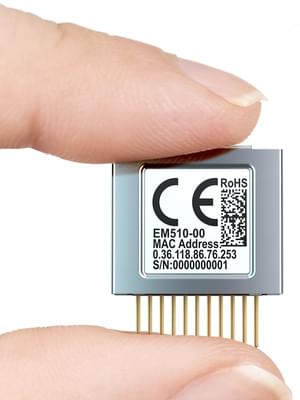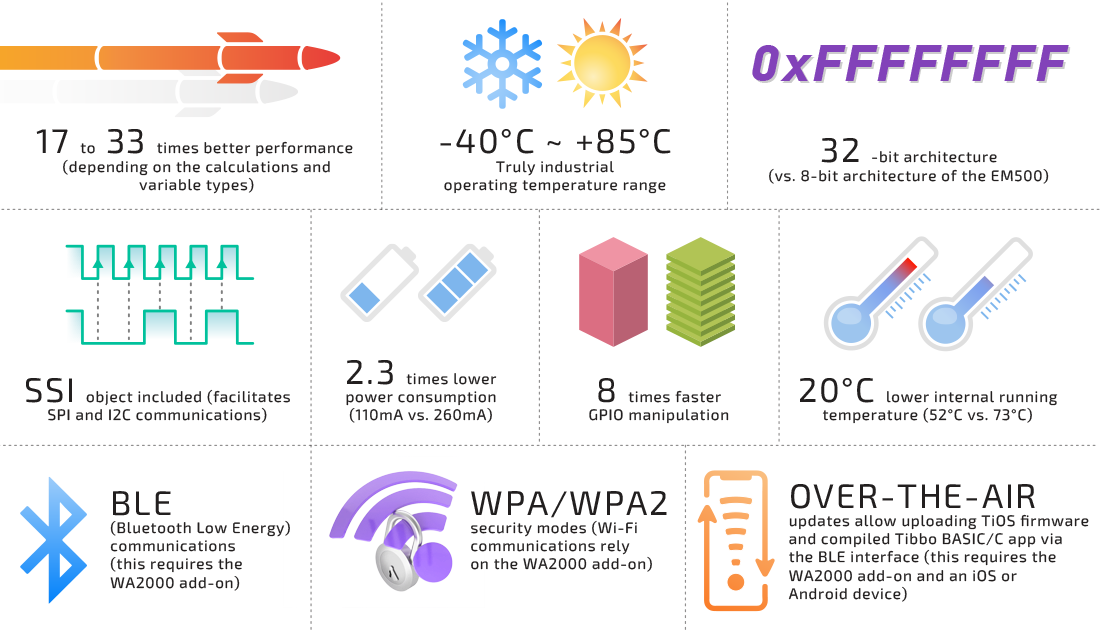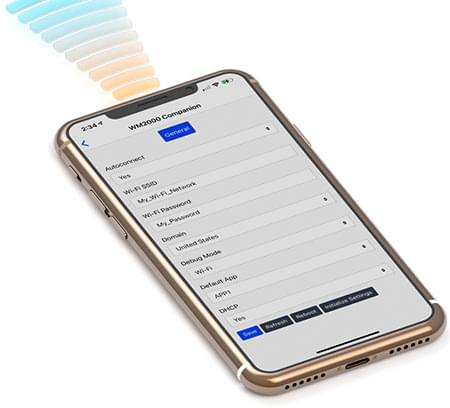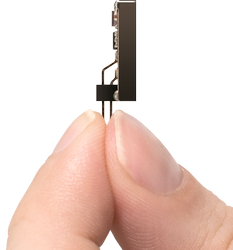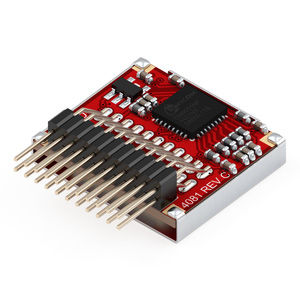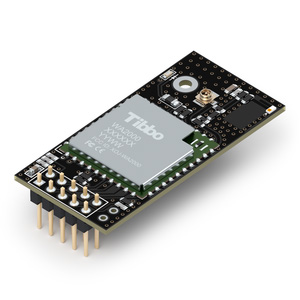The EM510 is an ultra-compact Tibbo BASIC/C-programmable IoT Module with a single UART, Ethernet, and optional Wi-Fi/BLE* (Bluetooth Low Energy) connectivity. The module offers substantial performance improvements over its predecessor — the original EM500 device.
The second member of our MiniMo® family, the EM510 is designed to be used in tandem with a standard RJ45/magnetics jack. The combined footprint of the EM510 and a typical jack is only 28.5 x 18.5mm (1.12 x 0.73").
Compact dimensions, space-saving "vertical slice" form factor, low power consumption, and economical pricing make the module an excellent fit for miniature, cost-sensitive IoT devices.
Module testing and evaluation can be performed with our EM510EV development system.
* Requires the WA2000 Wi-Fi/BLE add-on to be connected externally.







